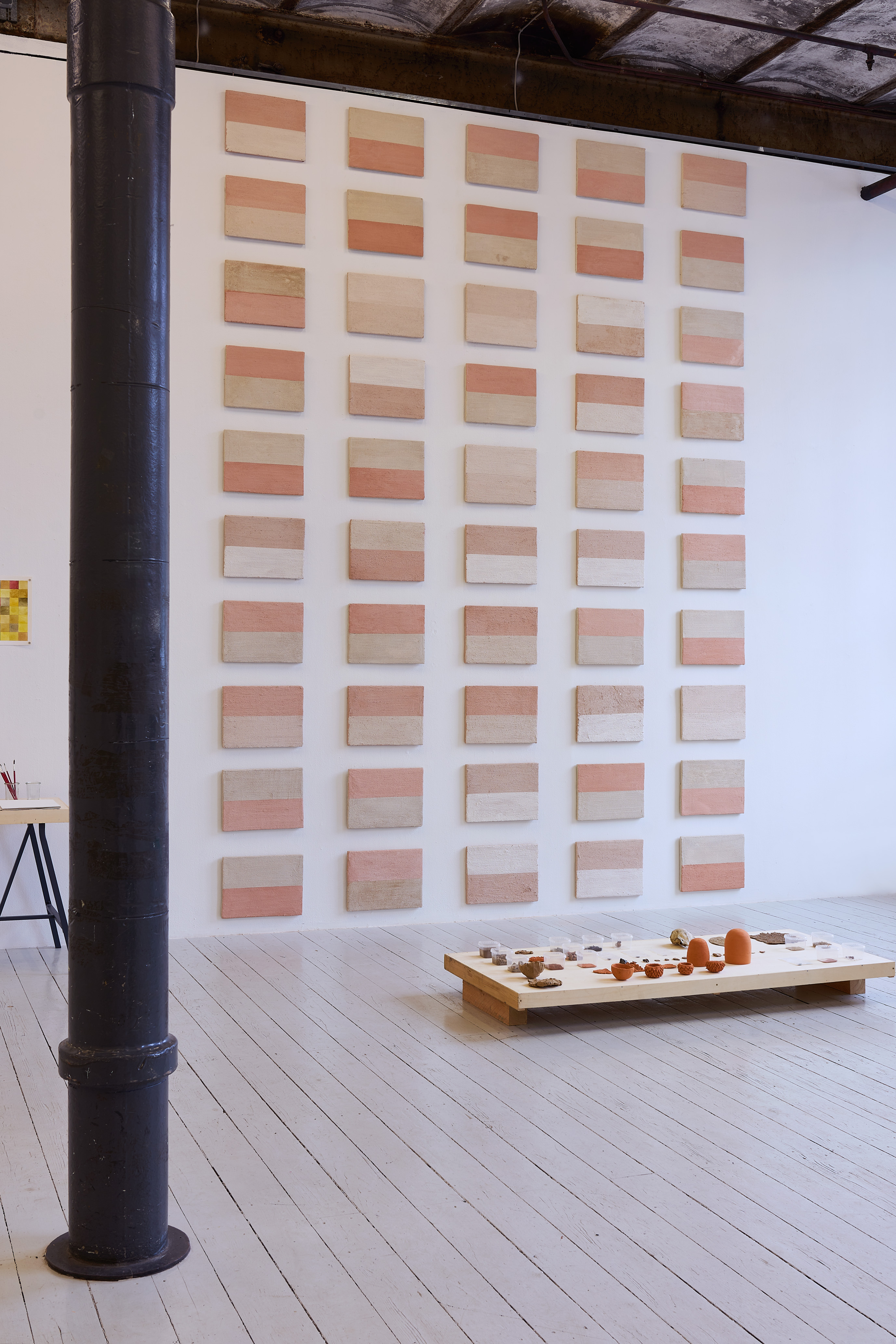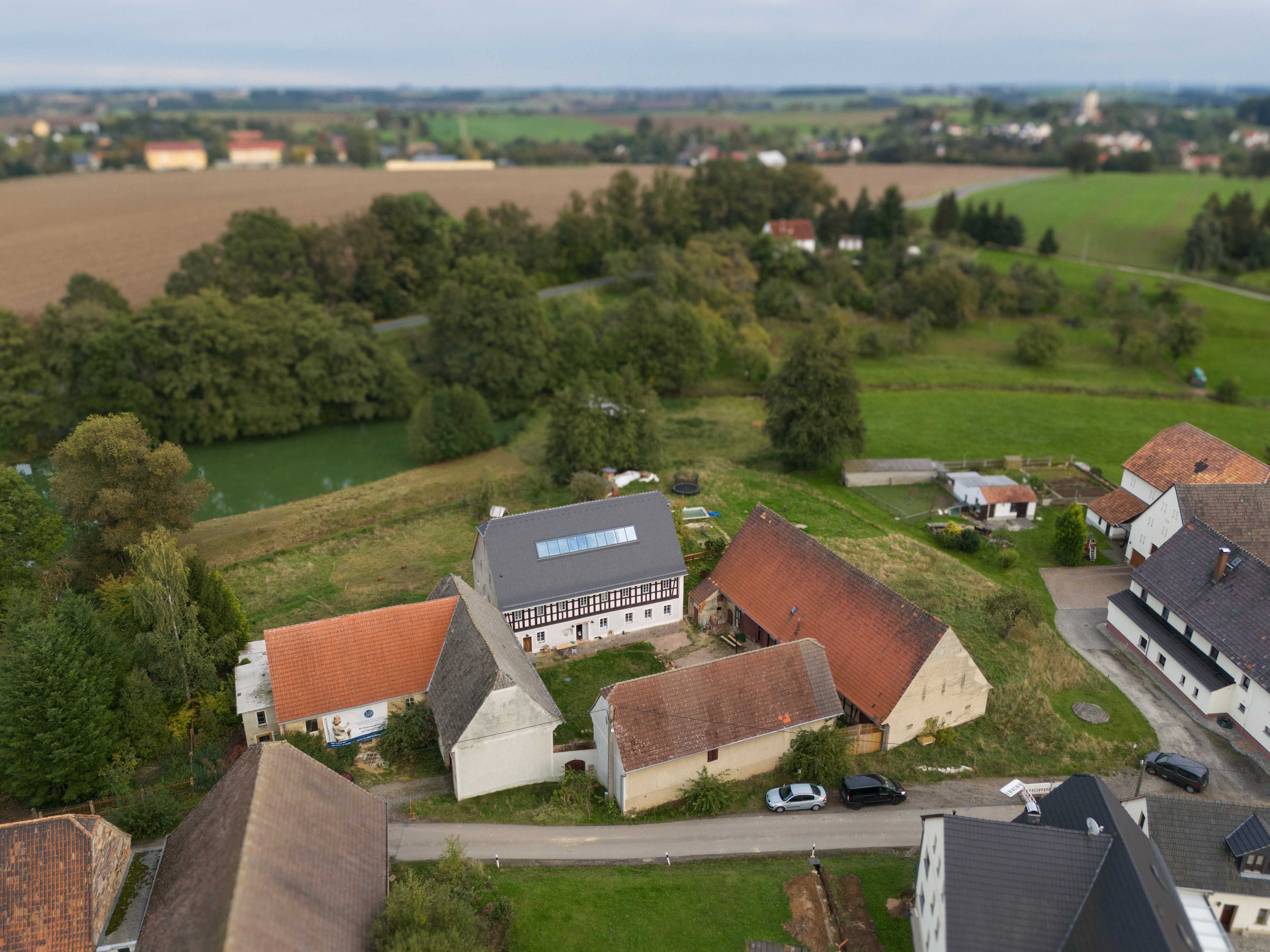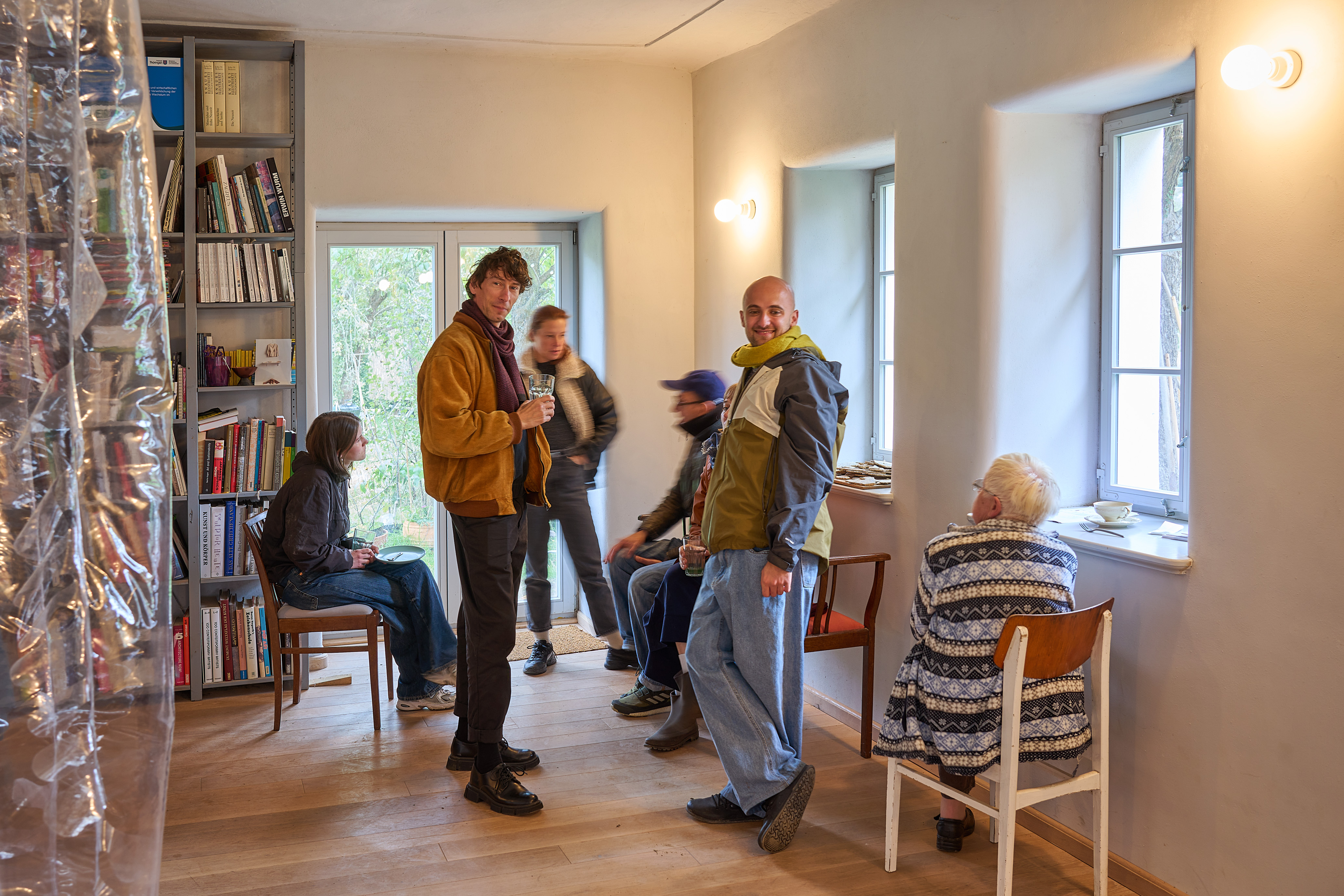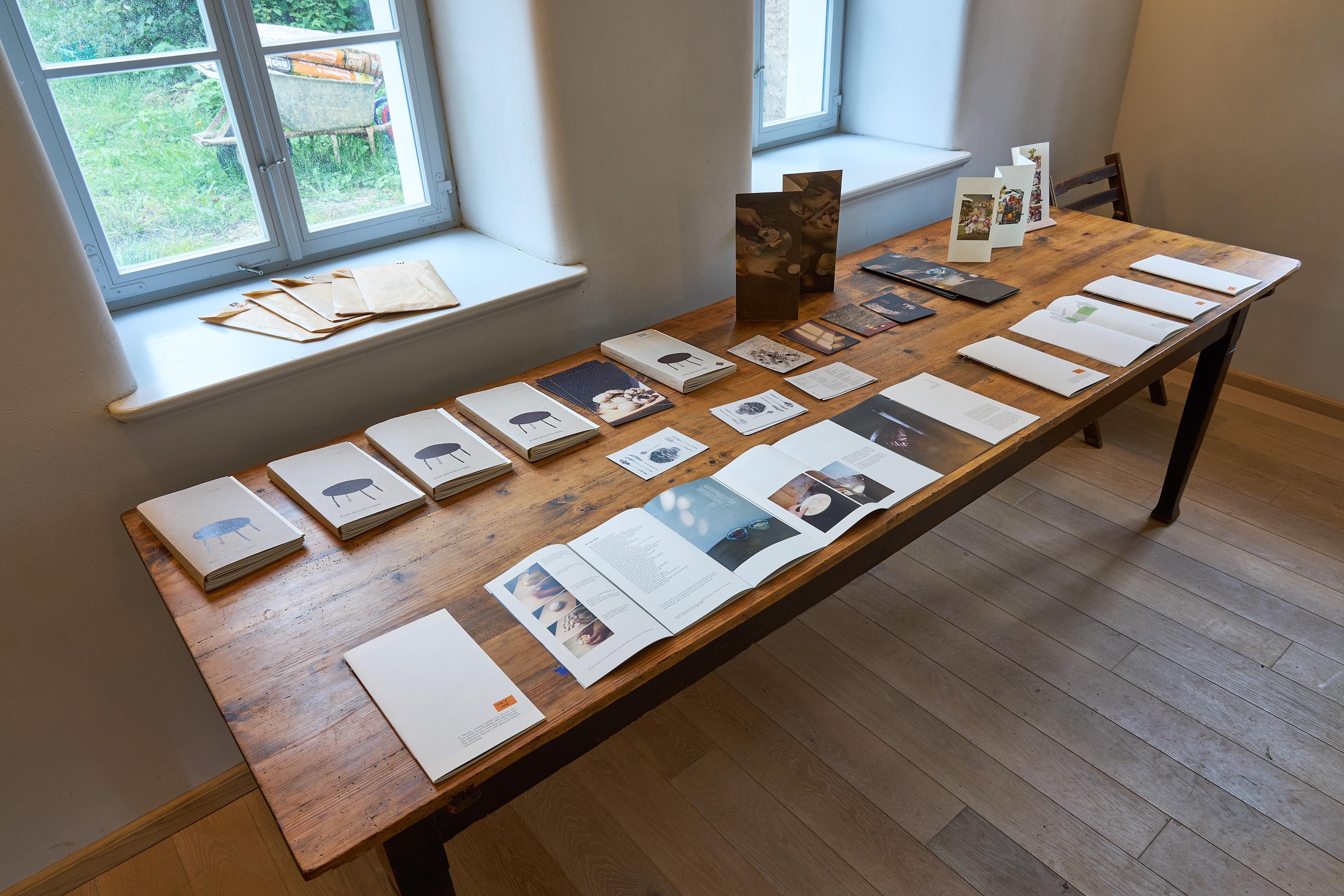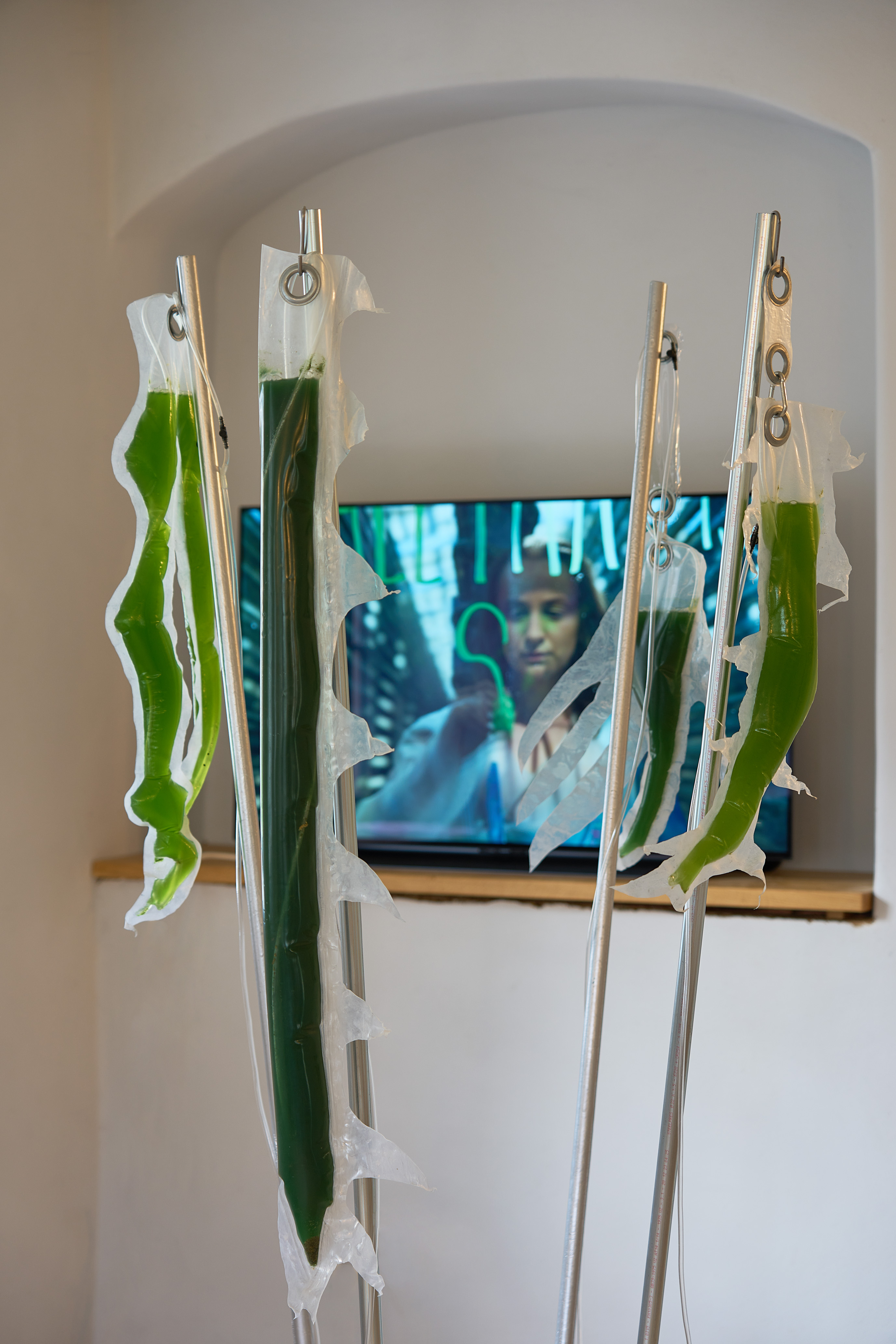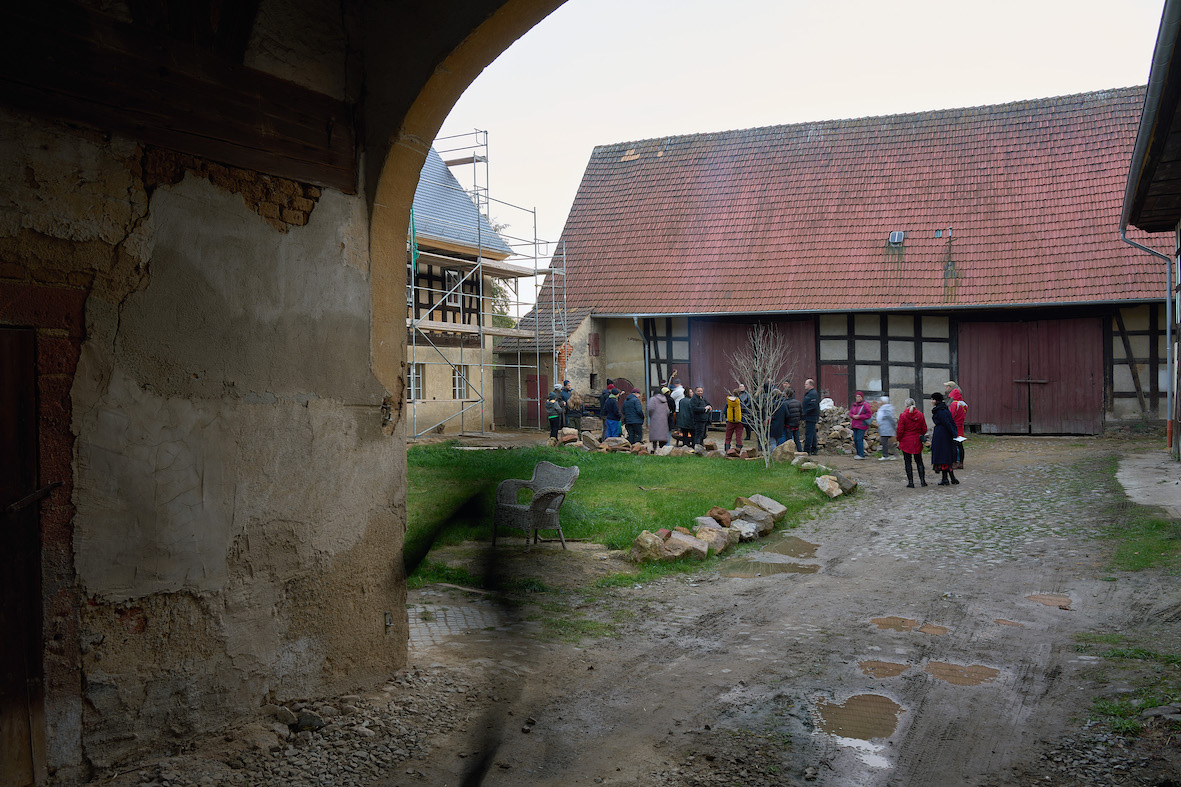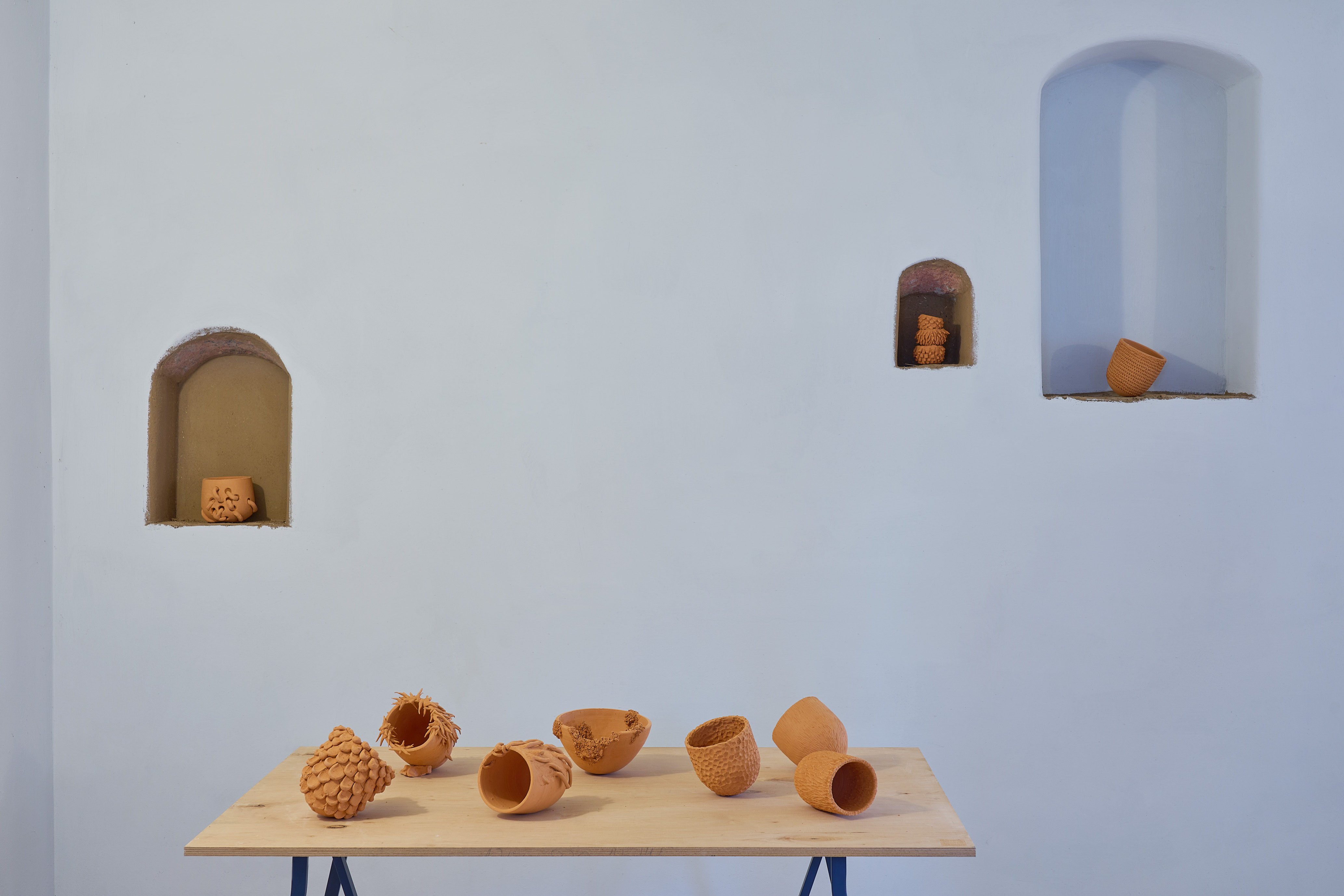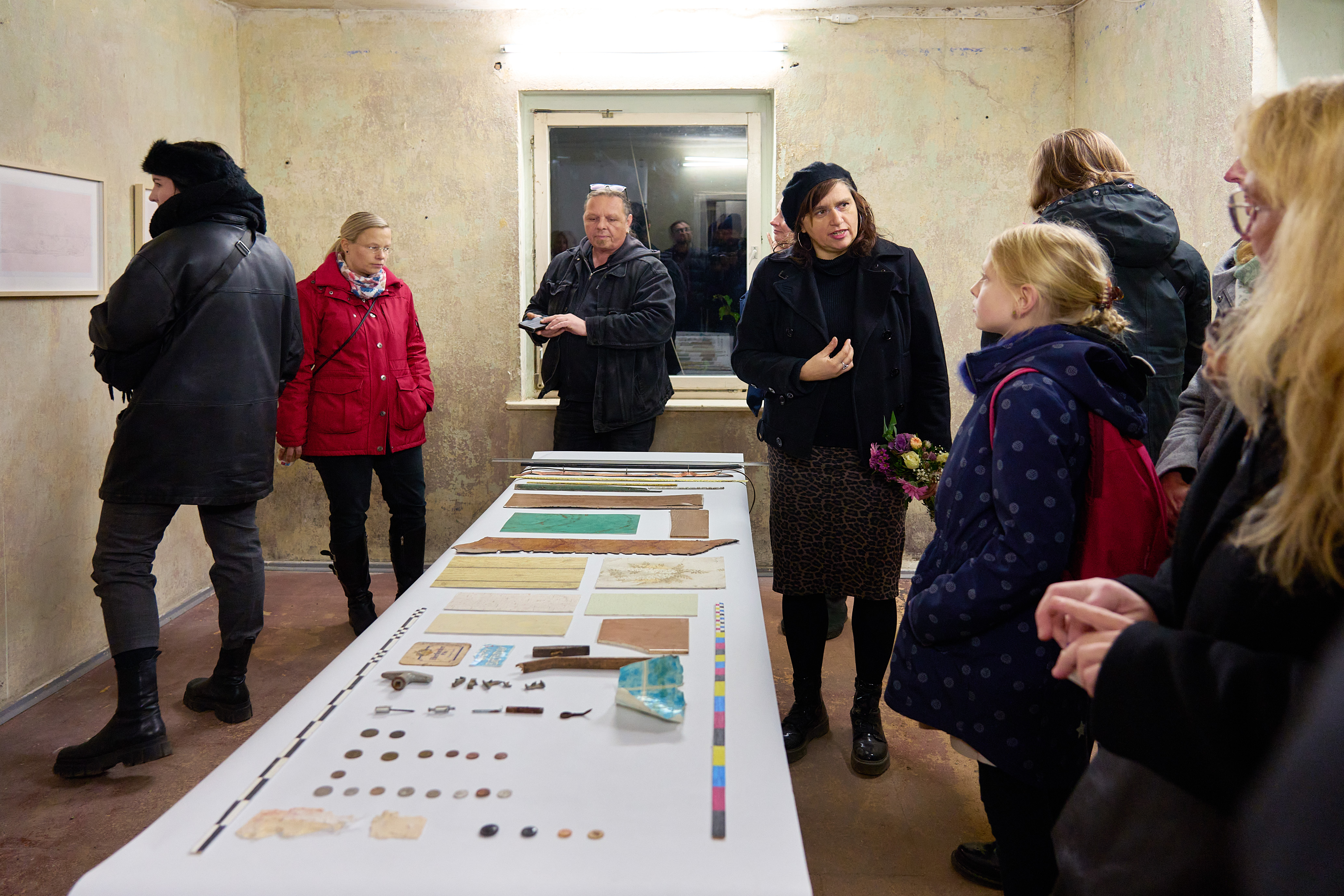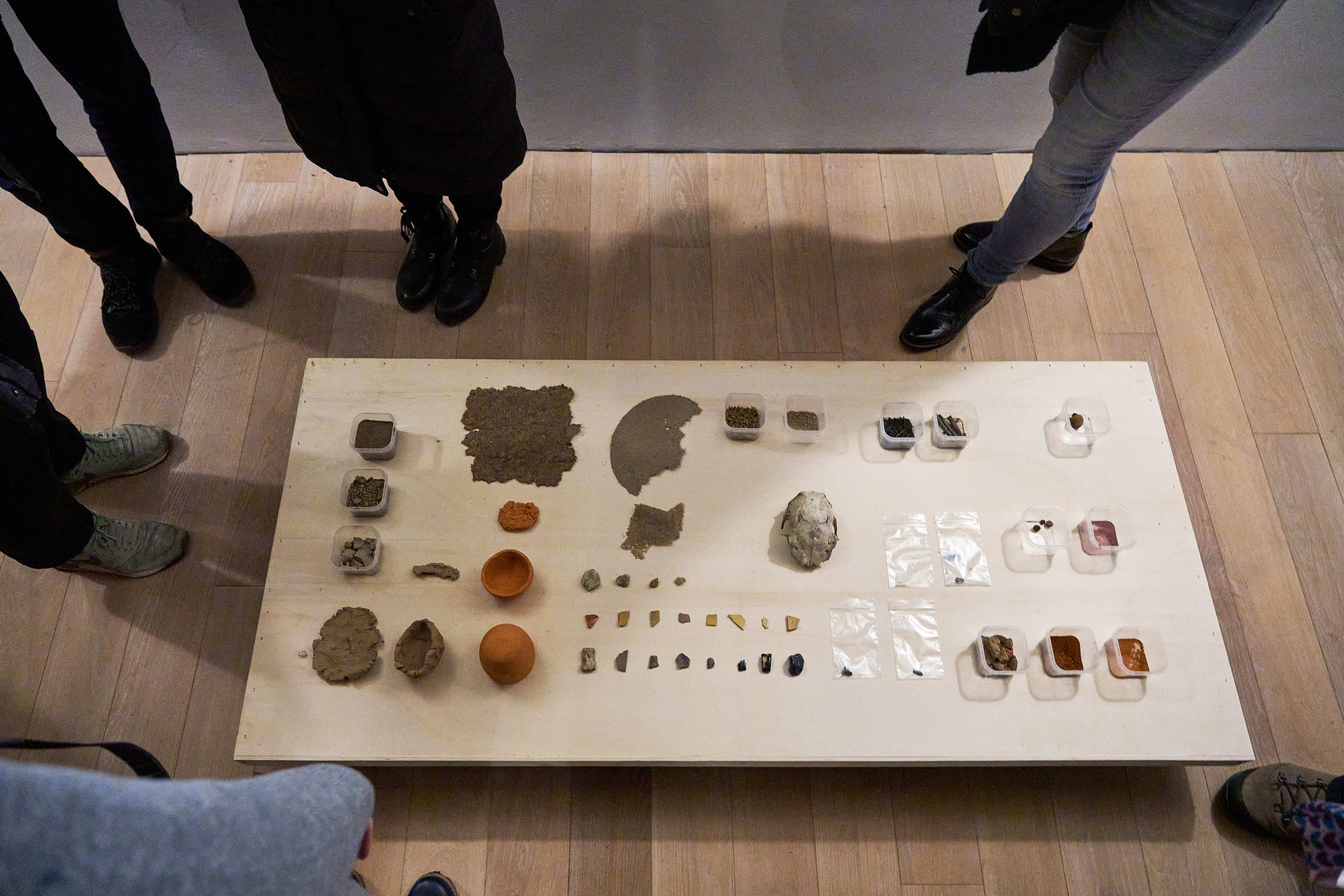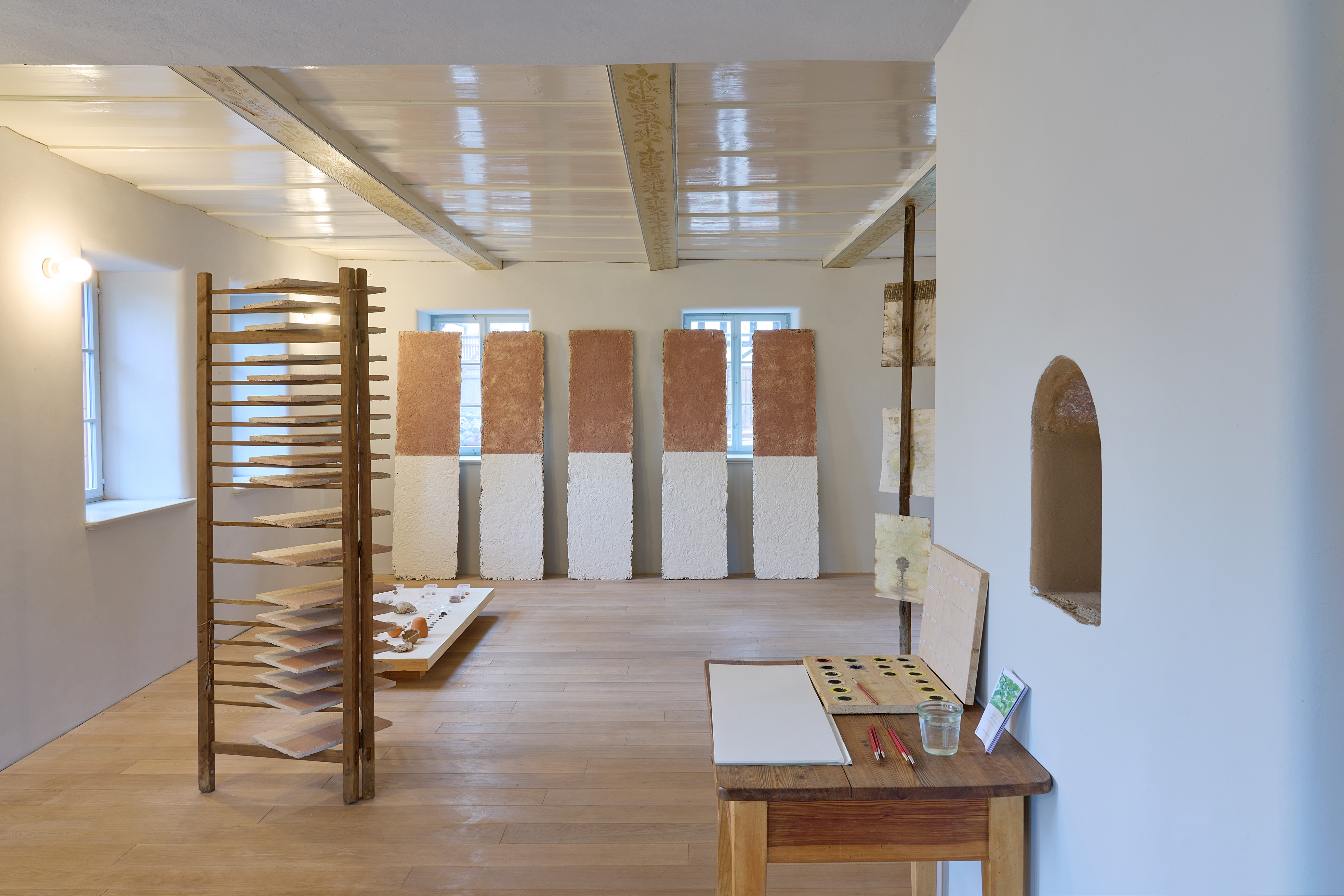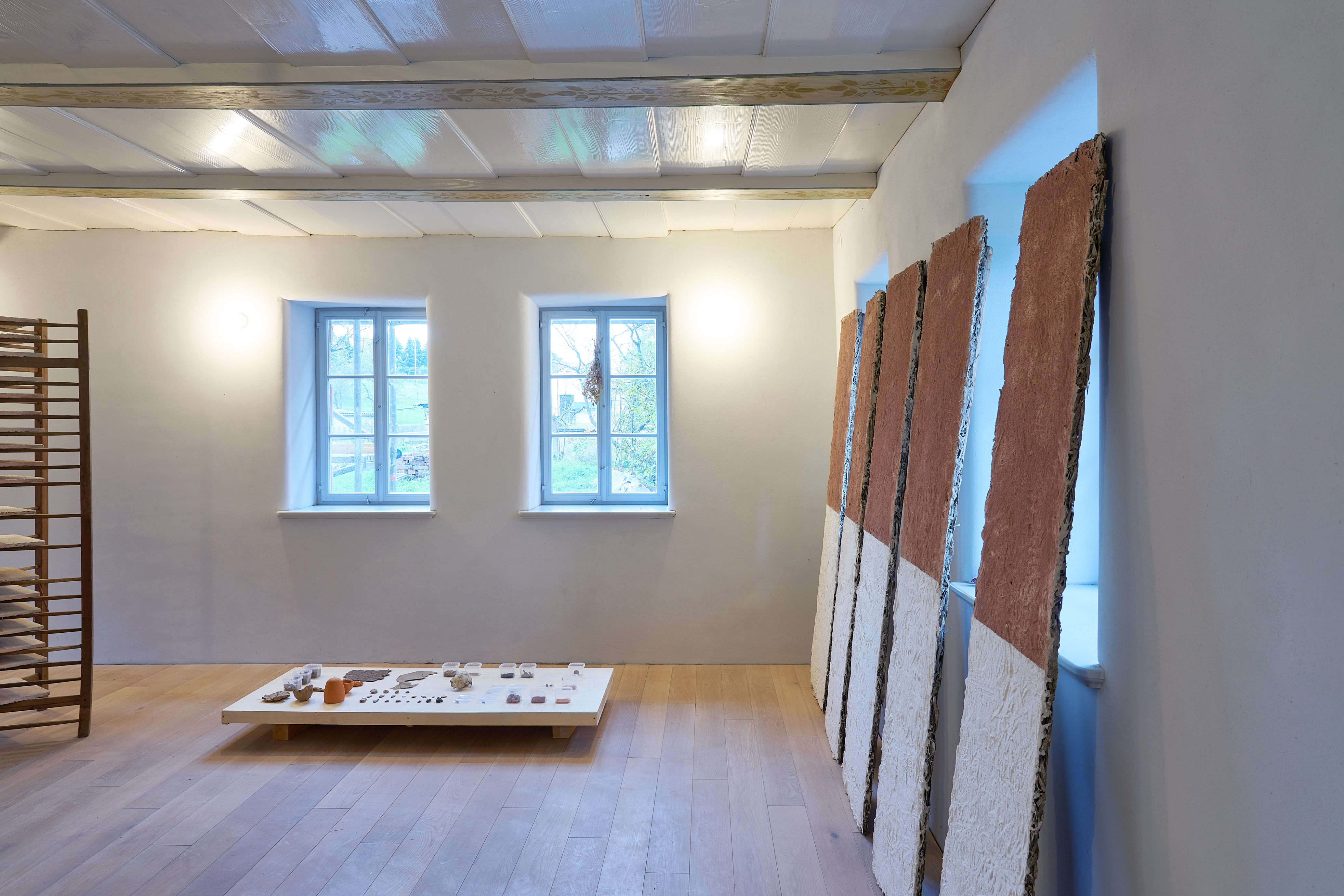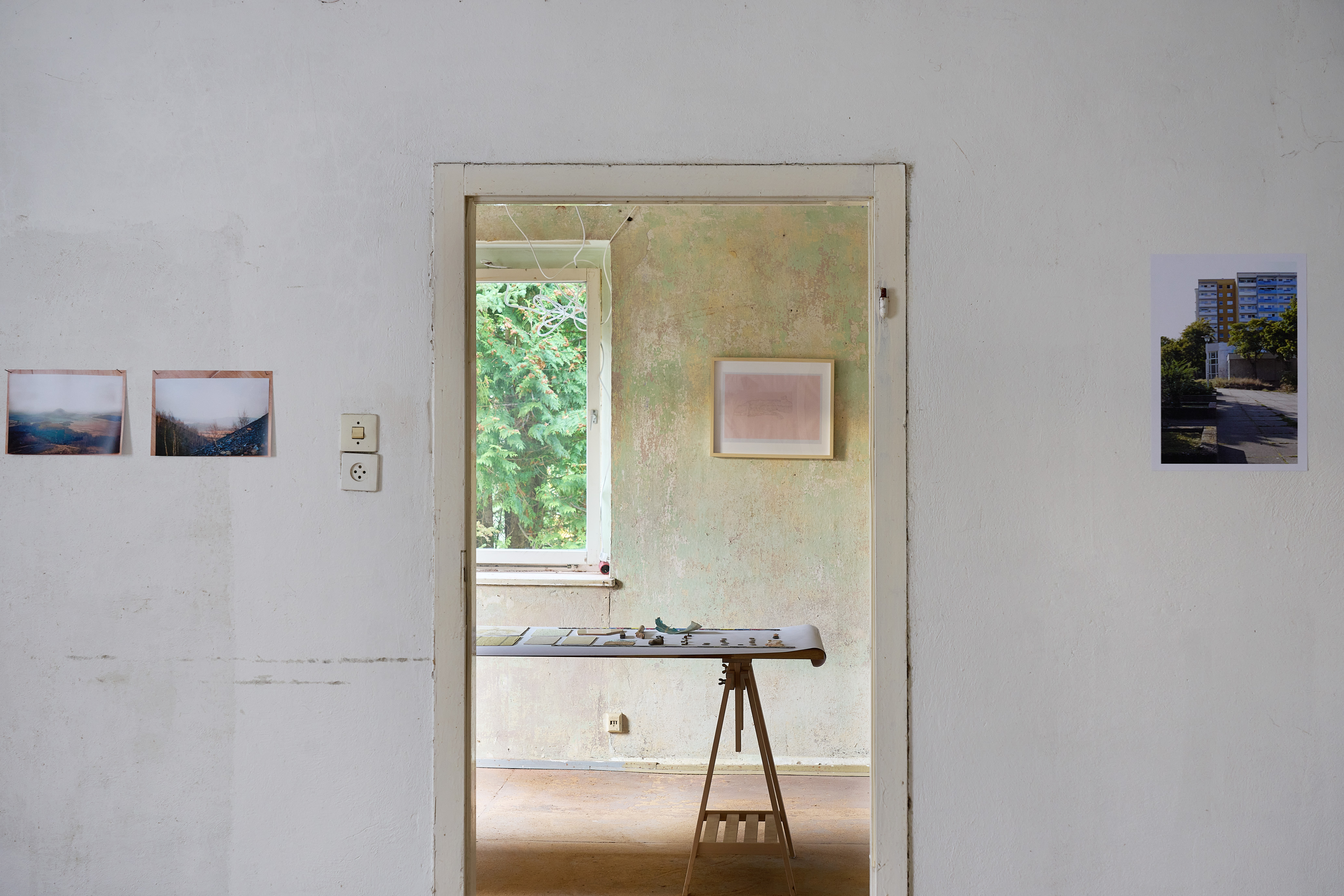Reconnecting with nature
in circuit
Kunsthof NIA – "in circuit" artistic residency programs
In circuit residency focuses on artistic work concepts that explore socially, culturally, and ecologically sustainable processes in an aesthetic way. It targets artists using participatory or research-based methods to engage with the regional community, stories, and materials within a global cycle. The residency, set on an earthen farm with gardens, examines how sustainability and climate neutrality influence art production, the cultural sector, and communal life.
Germany
Regional
Nobitz is the fourth-largest and the largest municipality by area in the Altenburger Land district, with 7,127 inhabitants (as of 2021). The region is considered structurally weak, with a disproportionately large share of an older population. The residencies create a circulation between local, regional, and international cultures and knowledge, participating with all ages.
Mainly rural
It refers to other types of transformations (soft investment)
Yes
2024-12-08
No
No
No
As a representative of an organisation
The Kunsthof Niederarnsdorf is a physical and conceptual space that has been developing on a four-sided farm with farm gardens in the Altenburger Land region since 2022. The farm is an LeerGut project of the IBA Thuringia and is being given a new future perspective through revitalizing cultural work and ecological renovation.
As part of artist-residency grants, temporary artistic research communities are created that address the public and regional population through research, experiments and events. The premise of the artistic work is the generation of climate-neutral work processes in art and the integration of local, natural materials.
Behind the project is the promotion of up-and-coming artists and the young discipline of artistic research, as well as the cultural cultivation of urban-rural relationships through the creation of residency scholarships.
We are convinced of the social responsibility and strong transformative power of art and culture.
The establishment of artistic scholarships in rural areas, coupled with regular and accompanying cultural events, addresses precisely this issue: New ways of seeing and thinking provoke debate and make it possible to experience that new paths and relationships, together with existing ones, unleash new potential.
Participatory and research-based artistic methods of contemporary visual arts act as a driving force with innovative potential for interdisciplinary exchange and promote encounters between people and those involved in art. Topics such as sustainability and climate neutrality are experienced in an aesthetically playful way through art and culture, making them culturally and socially comprehensible. The residencies are accompanied by interdisciplinary salons that provide footage for the artistic works, form a forum for exchange with other disciplines and create a place for encounters with the village and the regional population.
As part of artist-residency grants, temporary artistic research communities are created that address the public and regional population through research, experiments and events. The premise of the artistic work is the generation of climate-neutral work processes in art and the integration of local, natural materials.
Behind the project is the promotion of up-and-coming artists and the young discipline of artistic research, as well as the cultural cultivation of urban-rural relationships through the creation of residency scholarships.
We are convinced of the social responsibility and strong transformative power of art and culture.
The establishment of artistic scholarships in rural areas, coupled with regular and accompanying cultural events, addresses precisely this issue: New ways of seeing and thinking provoke debate and make it possible to experience that new paths and relationships, together with existing ones, unleash new potential.
Participatory and research-based artistic methods of contemporary visual arts act as a driving force with innovative potential for interdisciplinary exchange and promote encounters between people and those involved in art. Topics such as sustainability and climate neutrality are experienced in an aesthetically playful way through art and culture, making them culturally and socially comprehensible. The residencies are accompanied by interdisciplinary salons that provide footage for the artistic works, form a forum for exchange with other disciplines and create a place for encounters with the village and the regional population.
Transformative sustainability strategies through art and culture
Participatory development of an inclusive platform for exchange
Intergenerational dialogue and engagement
Cultural education in rural areas
Strengthening urban-rural connections
The fact that social and ecological resilience limits have been reached is palpable everywhere, making the discussion on long-term viable models for societal transformation increasingly urgent. To explore and test new approaches and design models for reshaping social processes, we need not only science, politics, and technology but also art and culture as driving forces for a collective pursuit of conscious and sustainable ways of living.
Since 2022, Kunsthof Niederarnsdorf has established the residency program as a forum for sustainable processes through cultural work in rural areas.
- Promotion of transformative sustainability strategies through art and culture
- Development of an inclusive platform for participation, exchange, and encounters
- Initiation of intergenerational dialogue
- Cultural education formats in rural areas
- Cultural accessibility and local supply
- Contribution to the regional and national visibility of a thriving Thuringian cultural landscape
- Strengthening urban-rural relations
- Contribution to the Thuringian Sustainability Agreement
- Support for the compatibility of family and career in the cultural sector (childcare for residents)
- Promotion of career opportunities in rural areas (FSJ – Voluntary Social Year)
Since 2022, Kunsthof Niederarnsdorf has established the residency program as a forum for sustainable processes through cultural work in rural areas.
- Promotion of transformative sustainability strategies through art and culture
- Development of an inclusive platform for participation, exchange, and encounters
- Initiation of intergenerational dialogue
- Cultural education formats in rural areas
- Cultural accessibility and local supply
- Contribution to the regional and national visibility of a thriving Thuringian cultural landscape
- Strengthening urban-rural relations
- Contribution to the Thuringian Sustainability Agreement
- Support for the compatibility of family and career in the cultural sector (childcare for residents)
- Promotion of career opportunities in rural areas (FSJ – Voluntary Social Year)
Our participatory conception of cultural work and the material resources of the site, which in turn are also of timber-framed and substantial importance for the cultural-historical building, interlock due to the prevailing conditions on site (loam, clay, natural stone, plants). In work processes that are structured in a circular manner, all those involved in the process contribute as co-authors and dialog partners: Materials, places, stories and people and generate a democratic design. Participatively generated artistic expressions are given a high degree of sensuality and conceptual depth as aesthetic characteristics through the process.
It is an experiment in joint “learning” that attempts to understand how socio-ecological problems can be mastered.
- A place for temporary autonomy
In rural areas, such a refuge can provide a broad-based and sustainable interface between the local population and the artists, who temporarily experience the place and use its possibilities. When staying at this location, the artists benefit above all from the autonomy of the place, which allows them to concentrate fully on their work and participate in the exchange of knowledge and experience.
Artistic researchers gain access to working and living spaces in rural areas, in which the primarily temporary communities cultivate a culture of encounter and exchange, discourse and various practical applications, which manifests itself in the garden as a planting and thinking space or via a herbal laboratory, community pharmacy, library, workshops, studios, exhibition and community spaces.
- Challenges - technical / social
Through the principles of self-organization, long-term use and maintenance, sustainability, individual and collective responsibility, and thus independence and self-determined living become the programmatic focus.
Applying the principles of sustainability, a culture of renunciation and, not least, the responsible use of energy, both in the production of art and exhibitions and in the operation of the necessary spaces such as studios, gallery and workshops, are among the most important ecological challenges for the Kunsthof Niederarnsdorf.
- Ecology / ecological thinking
This includes a critical perspective on ecology, in which the “natural world” or “environment” is inextricably intertwined with areas of society and its organizational structures. Geopolitics, environmental and social policy, science, technology, economics, law and culture interact with each other, i.e. are in circuit with each other.
- A place for temporary autonomy
In rural areas, such a refuge can provide a broad-based and sustainable interface between the local population and the artists, who temporarily experience the place and use its possibilities. When staying at this location, the artists benefit above all from the autonomy of the place, which allows them to concentrate fully on their work and participate in the exchange of knowledge and experience.
Artistic researchers gain access to working and living spaces in rural areas, in which the primarily temporary communities cultivate a culture of encounter and exchange, discourse and various practical applications, which manifests itself in the garden as a planting and thinking space or via a herbal laboratory, community pharmacy, library, workshops, studios, exhibition and community spaces.
- Challenges - technical / social
Through the principles of self-organization, long-term use and maintenance, sustainability, individual and collective responsibility, and thus independence and self-determined living become the programmatic focus.
Applying the principles of sustainability, a culture of renunciation and, not least, the responsible use of energy, both in the production of art and exhibitions and in the operation of the necessary spaces such as studios, gallery and workshops, are among the most important ecological challenges for the Kunsthof Niederarnsdorf.
- Ecology / ecological thinking
This includes a critical perspective on ecology, in which the “natural world” or “environment” is inextricably intertwined with areas of society and its organizational structures. Geopolitics, environmental and social policy, science, technology, economics, law and culture interact with each other, i.e. are in circuit with each other.
Through methods of outreach cultural work, people are inspired, empowered and activated to consciously help shape positive structural change in the region, to ensure a local cultural and culinary supply for all generations in the Altenburger Land (local and mobile) and to jointly create open places and offers for encounters, exchange, knowledge transfer and services of general interest as well as their accessibility.
We would like to use an example to illustrate its effectiveness. The artist duo Gift - Kit - Kollektiv (Taiwan, Australia) initiated home visits to people of different generations here in the region as part of in - circuit residency. During these conversational formats about recipes and ingredients, the collective generated a participatory multicultural cookbook that shows how the migration of recipes and ingredients creates a common culture of change that connects everyone and breaks down barriers, overcoming borders. The duo then hosted tastings and shared meals, creating memorable encounters and contact zones as an effective way to combat loneliness among the older population.
We would like to use an example to illustrate its effectiveness. The artist duo Gift - Kit - Kollektiv (Taiwan, Australia) initiated home visits to people of different generations here in the region as part of in - circuit residency. During these conversational formats about recipes and ingredients, the collective generated a participatory multicultural cookbook that shows how the migration of recipes and ingredients creates a common culture of change that connects everyone and breaks down barriers, overcoming borders. The duo then hosted tastings and shared meals, creating memorable encounters and contact zones as an effective way to combat loneliness among the older population.
The programme in circuit has various supporters from the community and the federal political level as well as a network of local cultural actors and a superordinate network, IBA Thuringia. Our project is funded by the Cultural Foundation and Monument Preservation of the State of Thuringia and the German Foundation for Commitment and Volunteering. This support is transparent and has backed our project from the outset in the most positive way, enhancing its reputation among the local population and breaking down fears of contact.
The young discipline of artistic research is a driving force and is linked in various ways within the residency programmes: via the IBA Thuringia and monument preservation with cultural-historical building culture and archaeology, through network partners with socio-cultural and sociological methods, urban and rural development.
in circuit residency program is an innovative initiative that merges contemporary artistic practices with the urgent need for sustainable processes, contributing to a forward-thinking cultural ecosystem. By providing artist residencies in the rural village of Niederarnsdorf, the project fosters creative practices rooted in the themes of sustainability—encompassing social, ecological, economic, and cultural dimensions.
The program emphasizes interdisciplinary exchange through participatory and research-based artistic methodologies, which encourage active engagement with the local community and address regional issues. Artists are invited to work closely with the population, examining how local materials and topics can be transformed into globally relevant processes, all while prioritizing social sustainability and environmental friendliness. The integration of these themes into art practice is not merely theoretical; it becomes tangible, aesthetically expressed, and relevant to both local and global contexts. One of the most innovative elements of this project is its connection between art and community through "Erzählsalons" (storytelling salons), which serve as a platform for dialogue and mutual understanding. These salons invite people from all walks of life to share their experiences and memories, thus strengthening social cohesion and creating bridges across generations, professions, and cultures. The interactive nature of these events not only enriches the artistic process but also ensures that the project’s impact extends far beyond the artists themselves, fostering a deep connection between art, people, and place. In conclusion, this project is not just about fostering individual artistic expression but about creating a long-term, transformative impact on the cultural fabric of rural communities. It redefines the role of art in societal change, making it an active participant in the development of sustainable, interconnected futures for our community and
The program emphasizes interdisciplinary exchange through participatory and research-based artistic methodologies, which encourage active engagement with the local community and address regional issues. Artists are invited to work closely with the population, examining how local materials and topics can be transformed into globally relevant processes, all while prioritizing social sustainability and environmental friendliness. The integration of these themes into art practice is not merely theoretical; it becomes tangible, aesthetically expressed, and relevant to both local and global contexts. One of the most innovative elements of this project is its connection between art and community through "Erzählsalons" (storytelling salons), which serve as a platform for dialogue and mutual understanding. These salons invite people from all walks of life to share their experiences and memories, thus strengthening social cohesion and creating bridges across generations, professions, and cultures. The interactive nature of these events not only enriches the artistic process but also ensures that the project’s impact extends far beyond the artists themselves, fostering a deep connection between art, people, and place. In conclusion, this project is not just about fostering individual artistic expression but about creating a long-term, transformative impact on the cultural fabric of rural communities. It redefines the role of art in societal change, making it an active participant in the development of sustainable, interconnected futures for our community and
We strengthen rural areas and their potential through positive interaction between art, culture, cuisine, organic farming, cultural education, services of general interest, encounters, dialogue and environmental protection.
Through outreach and activating methods of artistic research, the local population participates, knowledge is circulated, social cohesion is strengthened and self-efficacy is experienced.
Through outreach and activating methods of artistic research, the local population participates, knowledge is circulated, social cohesion is strengthened and self-efficacy is experienced.
The methods of artistic research and outreach cultural work can be transferred to any location. They function like a vessel whose design is changeable, depending on the content that is to be transported or stored.
Whether it is an intervention in public space, colour extraction from plants, open kitchen formats, storytelling salons and audio walks. All these applications only become a work when people participate as co-authors and local materials are respected as dialogue partners.
Whether it is an intervention in public space, colour extraction from plants, open kitchen formats, storytelling salons and audio walks. All these applications only become a work when people participate as co-authors and local materials are respected as dialogue partners.
We believe in the transformative power of art and culture. The aim is to create a space and awareness for the self-efficacy of the individual as part of the whole. In this way, everyone takes responsibility and respect for our built and living environment. Through constant practices of reduction, deceleration, circular economy and circular thinking and action as well as participation, a power is found in communities that can have a transformative effect.
Since 2022, three residency programs have been carried out, with a total of 11 artists. These have been accompanied by 8 events annually, such as storytelling salons, dinners, and workshops. On average, each event reaches between 15 and 1,000 people, who are eager to return, become part of the community, and learn with us: spanning generations, local and regional populations of all cultures, guests from across the country (and beyond), and cultural professionals.

